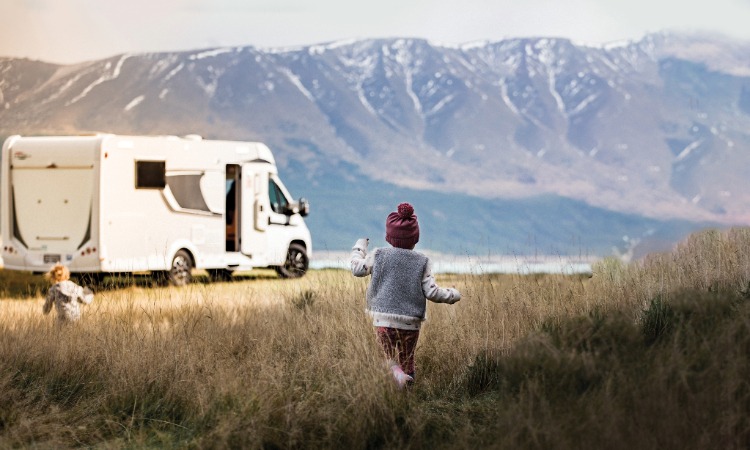
Exploring New Zealand with a young child can be an unforgettable experience — especially if your mode of transport is a motorhome hire with the wonder of the open road ahead.
But travelling with a young kid is a completely different experience to adventuring when you were young, free and independent. It requires more planning, particularly planning around keeping your youngster safe — and safety while travelling means a child restraint.
In this article, we discuss New Zealand’s child restraint laws, the child restraint options available to you, how to install Wilderness motorhome child restraints and on-the-road safety tips.
We also chat with Wilderness Motorhomes’ Adventure Support Team Leader, Iris Berentzen — to get her expert advice on how to safely secure your child in a motorhome.
Travelling with children presents unique joys and challenges — but the rewards of shared family experiences are immeasurable.
Safety in a motorhome becomes even more paramount when you think about its dual nature as both your vehicle and your living space. It's therefore essential that your youngest passengers are secure and comfortable during their New Zealand adventure.
An overview of New Zealand's child restraint laws
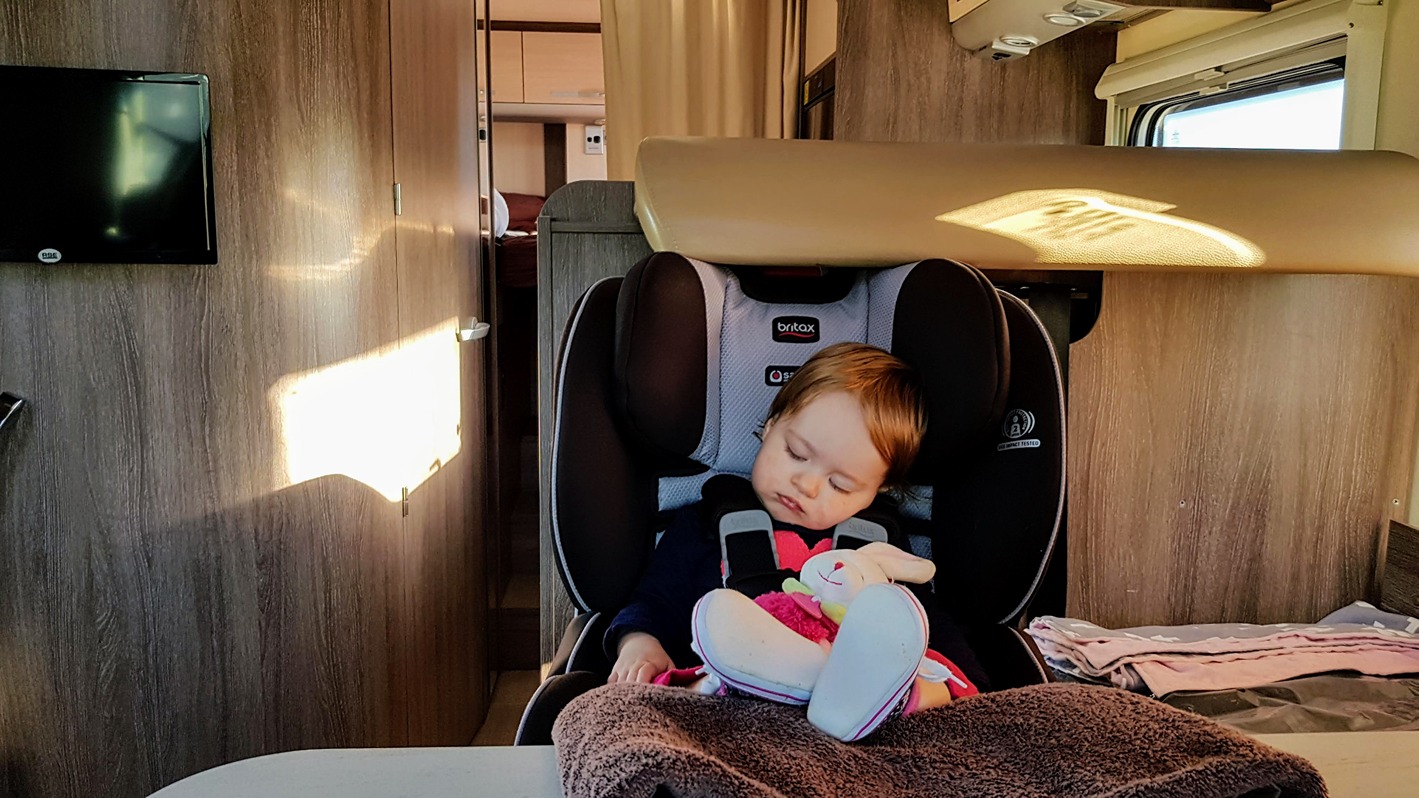
Seat belt safety is taken seriously in New Zealand — and that includes the safety of child passengers.
New Zealand law has specific regulations in place that are designed to protect children from birth up to seven years of age. Once over seven, until the age of 12, the law outlines recommendations for appropriate restraint.
These laws also apply when travelling with children in a motorhome or campervan hire.
Child restraint laws for under seven year olds
All kids under seven years of age must be correctly secured in an approved child restraint that’s suitable for their weight and size.
Child restraints for seven to eight year olds
Between the ages of seven and eight, secure your kid in an approved child restraint if one’s available in your motorhome rental. If there isn’t one available, you must utilise any safety belt or child restraint.

Child restraints for eight to 12 year olds
If you have children between the ages of eight and 12, you’re required to ensure they use either a:
- Child restraint — if there’s one available in your campervan
- Safety belt in the back seat — when a child restraint isn’t at hand.
|
Why child restraints matter
|
Challenges of fitting a child restraint in a motorhome

Child restraints are specifically designed to be installed in cars. Car seats are mainly structured for safe travel — whereas motorhome seats are often softer for greater comfort when the drive ends and it comes time to relax.
Motorhome seats can also come in various shapes and sizes which makes fitting a child restraint correctly a little tricky.
At Wilderness, we aim to mitigate this issue by:
- Only having the safest child restraints available for you and your family
- Applying strict guidelines for installing each type of child restraint in our motorhomes
- Fully training our team on how to safely fit and install our child restraints in each of our motorhome models.
|
Driver responsibility
As the driver of your motorhome rental, you’re ultimately responsible (from a legal standpoint) for ensuring that any child travelling in the vehicle is using a child restraint correctly.
It’s therefore important to be comfortable with how the child restraint is fitted and to check that it will keep your young one secure on the road. |
Types of child restraints for little travellers
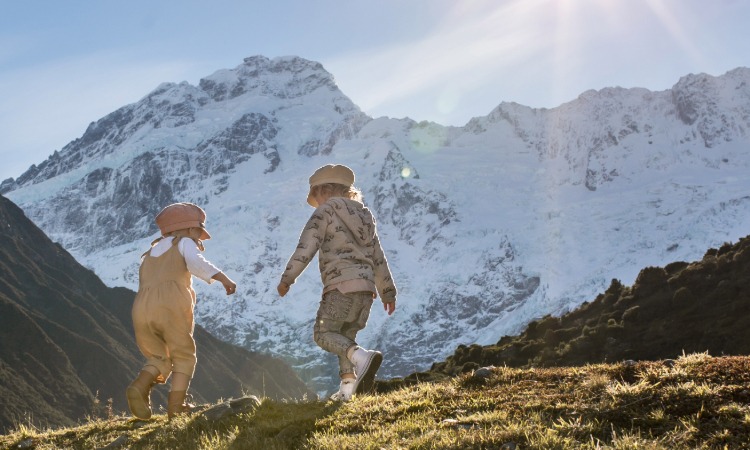
Different child restraints are designed for different stages of your kid’s growth. You’ll move from a rear facing seat when your child is an infant to a forward facing seat, and onto booster seats until the motorhome’s seat belt fits safely and securely.
The transition between these types of restraints depends on your child's height and weight rather than his or her age. Ideally, you’ll want to use a motorhome hire operator that will help you choose the best restraint for your young one — and show you how to install and use it.
At Wilderness, we use Britax child restraints which are some of the safest child seats on the market.
-
We recommend using a rear facing child restraint if you have an infant that:
- Weighs less than 18kg, and
- Is shorter than 125cm.
The harness strap should sit at or below your baby’s shoulders, with the top of his or her head below the top of the head restraint.
-

The child restraint can be front facing when your toddler or young kid:
- Weighs between 18kg and 29.4kg, and
- Is less than 125cm tall.
The harness strap should be at or above your kid’s shoulders with the top of his or her ears below the top of the head restraint. It’s safer once your child is at least two years old to seat him or her facing forward in a child restraint.
-

This type of child restraint doesn’t come with a harness and is dependent only on weight and height — as there’s no age guide. High back boosters are front facing and require your child to:
- Weigh between 29.4kg and 55kg, and
- Be 125cm to 160cm tall.
As your kid grows up, the high back booster seat becomes an option if his or her seated shoulder height is 55cm or less. The motorhome’s seat belt is used with this restraint — and the lap belt goes securely under the armrests across your child’s upper thighs.
The top of your child’s ears should also be below the top of the head restraint.
-

The half booster will suit your kid if the forward facing child restraint has been outgrown and he or she isn’t tall enough to only use the motorhome’s seat belt. Half booster seats can be used if your child:
- Weighs between 29.4kg and 55kg, and
- Is 125cm to 160cm tall.
There’s no age guide with this type either. If your kid’s weight and height are within the above limits, you can use the half booster along with your motorhome’s seat belt — as it normally works.
See our range of child restraints to keep your young one safe on the road.
|
We always recommend best practice to our guests. If they don’t follow the law and are caught out by police, they’ll have to come back to our base because they won’t be allowed to continue travelling in their motorhome.
Iris Berentzen — Wilderness Adventure Support Team Leader |
The benefits of using Britax child restraints
Wilderness chose Britax child restraints for their well-established reputation for quality and comfort — and because they're uniquely suited to addressing the inherent challenge of safely securing child restraints to motorhome seats.
All our Britax convertible child restraints (that can be used rear or front facing) feature the company’s award-winning ClickTight system.

A self-tensioning system, ClickTight helps take the guesswork out of installing child restraints. It simplifies the process of securely installing your child’s restraint by using the motorhome’s seat belt — rather than relying on lower anchor points.
Other benefits of Britax child restraints include:
- Deep side walls and a head restraint with energy-absorbing foam — designed to keep your child secure by lowering the centre of gravity and reducing the restraint’s forward movement
- Minimising the common problem of incorrect installation — by making the process easier and more intuitive.
Find out what safety, design and consumer awards Britax child restraints have won over the past decade.
How to install child restraints in a motorhome
Securing your child restraint correctly is just as vital as choosing the right one. At Wilderness, we recommend taking the following steps to ensure your child’s restraint is installed correctly for a secure and safe trip.

Preparing the space to install your child restraint
First, get the living room area ready for the child restraint.
- Move your front passenger seat as far forward as possible
- Release the dining table catch and move the table forward
- Slide off the two headrests on the rear passenger seats
- Pull out the seat belts so you can take off the seat backer
- Remove the side cushion — if you’re setting up the child restraint by the side window or you need to install two child restraint seats
- Place a blanket over the seats — to help protect the seat covers.
|
Blankets are really useful for protecting the seat under your child restraint because when you’re not using the car seat you can use it as a normal blanket. Iris Berentzen |
See our video demonstrating how to prepare your motorhome for installing a child restraint.
-
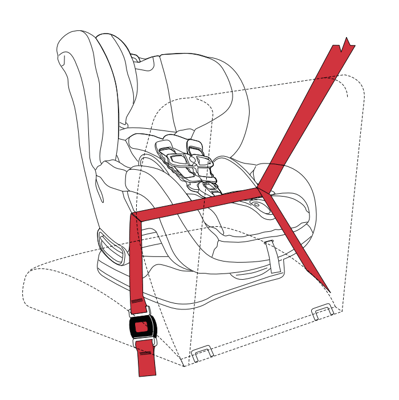
For very young children including babies, a rear facing car seat is their best form of protection. We offer the Britax Boulevard ClickTight — a quality product that’s one of the safest child seats on the market. To install it:
- Use the red lever to recline the child restraint all the way back
- Place the child restraint in the rear position on your motorhome seat — ensuring that the front strap is available
- Re-adjust the child restraint by checking the recline position indicator — to ensure it’s light blue if your kid is zero to one year old, or dark blue if older
- Press the dimple on the ClickTight dial and twist — releasing the child seat so it can be raised
- Pull your motorhome’s seat belt right out — and thread it through the two front gaps on each side of your child restraint
- Twist the buckle receiver seven or eight times
- Connect the buckle so it clicks — then pull the slack out on both sides of the child restraint, ensuring there aren’t any twists in the main strap
- Press the child seat back down into its place — using a little force until it clicks to confirm that the ClickTight system is secure.
Double check that the recline position indicator shows the little bubble hovering in the blue space.
Check out our video on how to install a rear facing child restraint.

With the Carado motorhomes, you should be able to lower the drop down bed even with your child restraint still installed by the side window.
Iris Berentzen
-

The Britax Boulevard ClickTight is also designed to face forward. To install it this way:
- Ensure the child restraint is positioned fully upright — then place it flat on one of the rear seats
- Adjust the position of the child restraint — checking the recline position indicator for when the little bubble hovers above the little man
- Double check that the base of your child restraint hangs less than 7.5cm over the edge of the motorhome seat
- Press the dimple on the ClickTight dial and twist — releasing the child seat so it can be raised
- Pull the motorhome’s seat belt right out — and thread it through the two forward facing green gaps on each side of your child restraint
- Connect the buckle so it clicks — then pull the slack out on both sides of the child restraint and ensure there aren’t any twists in the main strap
- Compress the seat and blanket by using your foot and weight on the seat — to pull out more slack on each side
- Press the child seat back down into its place — using a little force until it clicks to confirm that the ClickTight system is secure.
Take a look at our video showing how to install a forward facing child restraint.

Installing a child restraint in a motorhome is quite different to in a car. The seat cushions are very soft so you need to put quite a bit of pressure on the car seat — to make sure it gets really tight with no slack.
If you don’t do this, there’ll be too much movement.
Iris Berentzen
-
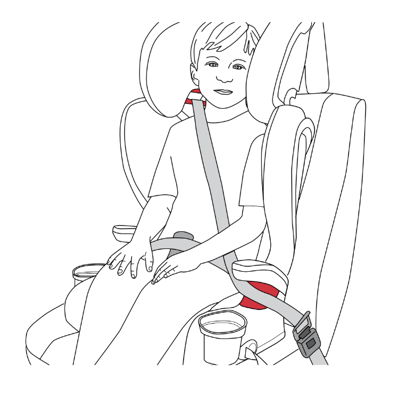
If your kid is a little taller or weighs more, the Britax High Back Booster may be the safest child restraint option. To install it:
- Place the child restraint on the seat until it rests flush against your motorhome’s seat back
- Adjust the head restraint to a suitable height using the height adjuster — until the shoulder belt guides are at (or just above) your kid’s shoulders
- Release the height adjuster — then pull it up to ensure the head restraint is locked in place
- Pull the motorhome’s seat belt right out — and thread the shoulder belt through the shoulder belt guide
- Route the lap belt under the armrests but over the base
- Ensure the lap belt is directed through the centre SecureGuard clip — so the clip’s bottom edge is level with your kid’s upper thighs
- Connect the buckle so it clicks
- Pull the slack out on both sides of the child restraint — ensuring there aren’t any twists in the main strap.
What is ISOFIX?
ISOFIX is an attachment point international standard for child safety seats in passenger vehicles.
Some of our newer fleet are fitted with ISOFIX. It’s particularly helpful for anchoring high back booster seats in motorhomes. If your motorhome rental has ISOFIX, attach the connectors on the base of your high back booster seat to the anchor points as part of the installation process.
-
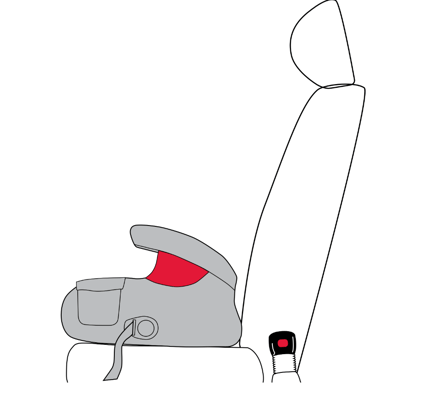
Another option for kids who aren’t quite tall enough to sit without any support is the half booster. To install this one:
- Place the half booster on your motorhome’s rear seat
- Pull the motorhome’s seat belt right out — and thread the lap belt under the armrests but over the base belt guides
- Connect the buckle so it clicks.

It’s best to go by height because it’s all to do with where the seat belt sits right.
So if a child is seven years old and very short, they’ll still need a high back booster seat. But if a child is seven and really tall, they may be able to sit on the motorhome seat — without a booster.
Iris Berentzen
Child safety tips when on the road in your motorhome
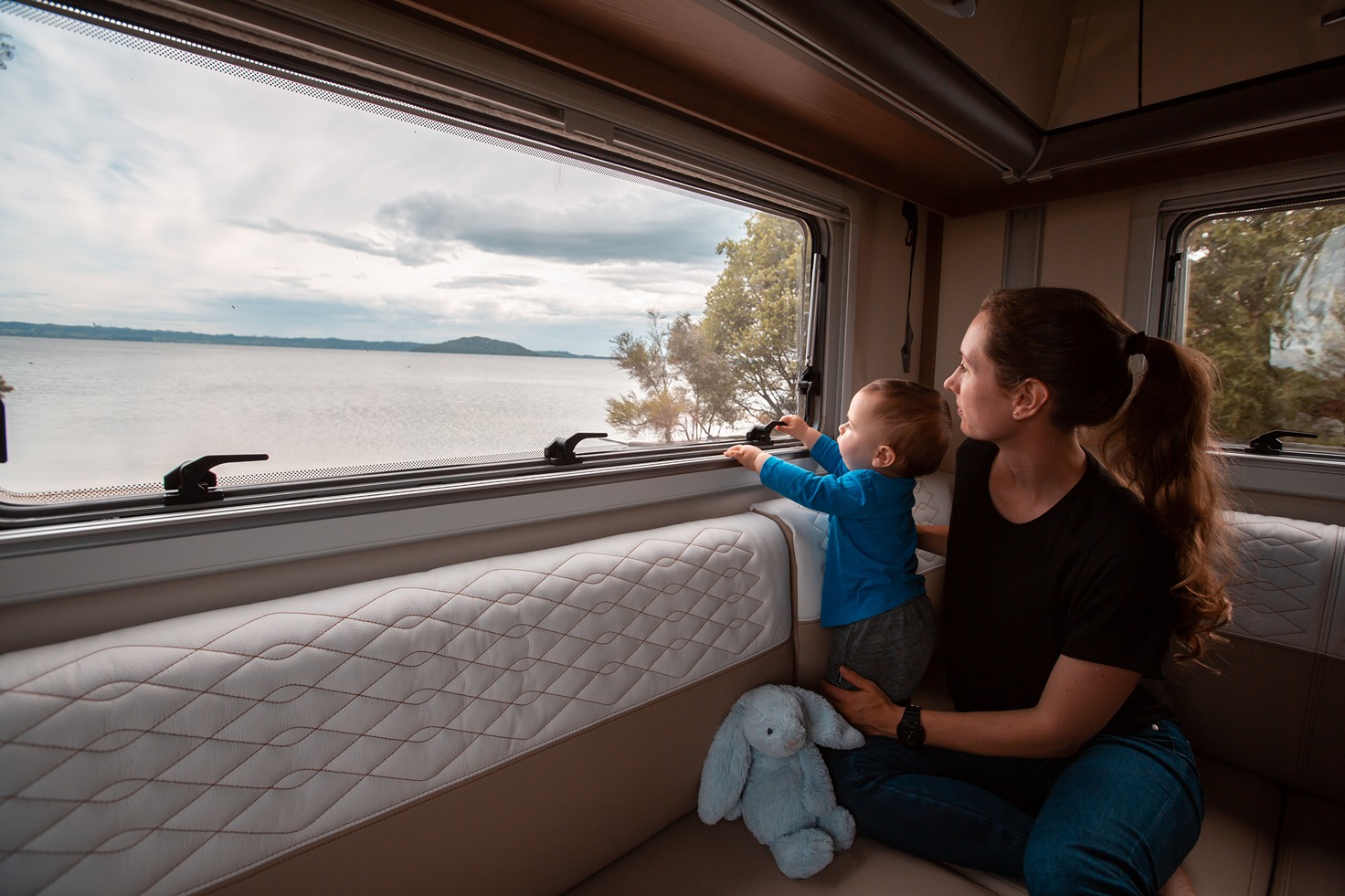
You’ll want to keep the inside of your campervan rental safe and secure for your young ones while enjoying New Zealand’s incredible scenery. Keep safety top of mind with these useful tips.
- If you hire any Wilderness motorhome aside from The Suite, you’ll be able to lower the front drop down bed while the child restraints remain installed
- Follow the child restraint instruction manual step by step
- Avoid installing the child restraint in the front passenger seat — as an accident will trigger the front airbags
- If you only need one child restraint, place it next to the window so that you or another parent can more easily sit next to your kid
- Use the shake test to ensure your child restraint is fitted as tightly as possible — so it doesn’t move forwards or sideways
- Always check that your child is correctly buckled in their restraints before putting your motorhome in motion
- Once your kid is securely fastened in their restraint, do the pinch test by pinching the fabric of the harness straps to see if it’s snug or too loose
- Confirm any loose items are placed in storage spaces before driving off — to avoid them becoming projectiles should you need to stop suddenly
- If you want to remove the child restraint during overnight stays, store it in your motorhome’s garage
- Should any liquid accidents happen, the child restraint will need washing — but the material can be removed and vinegar works well at removing smells
- Ensure that your kid is never left alone in the child restraint — even during short breaks, like to take photos or check out native wildlife.

Check out our top ten tips for campervan travel with a baby in New Zealand.



